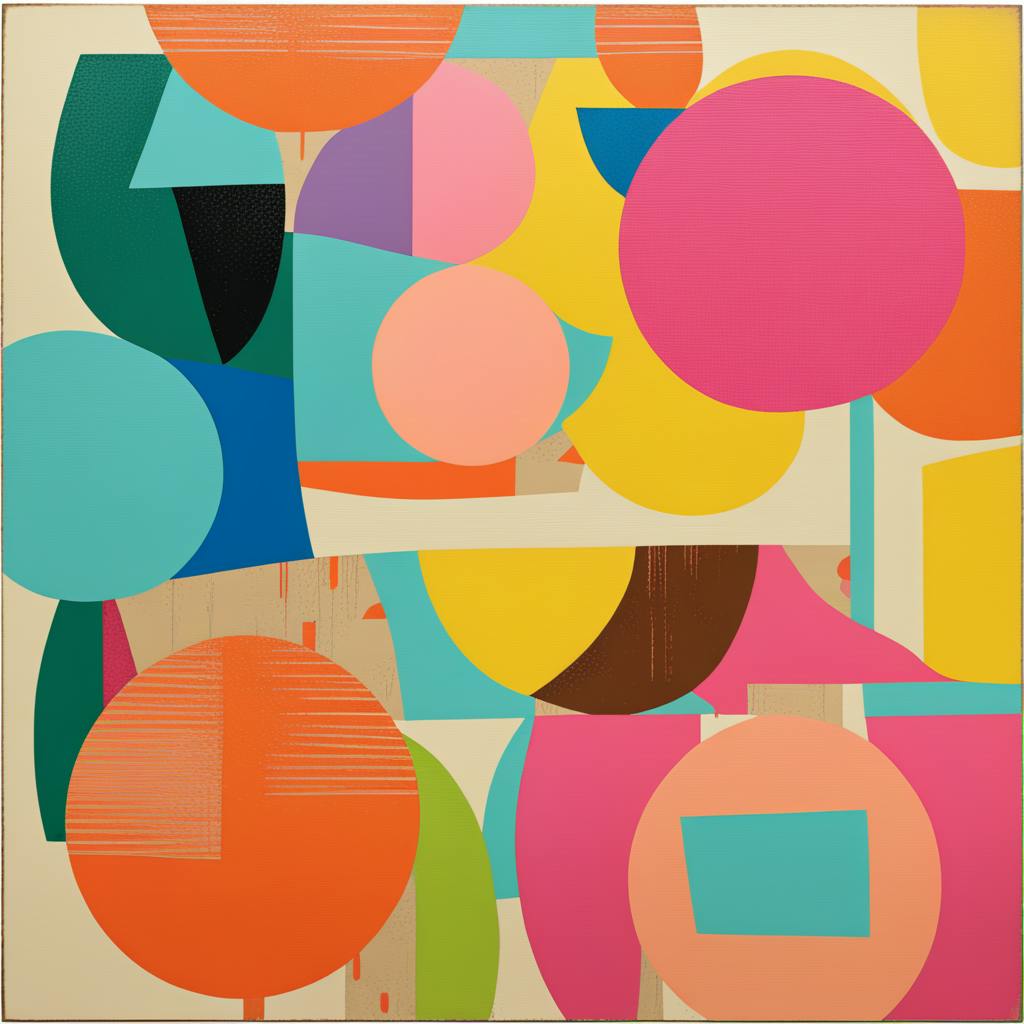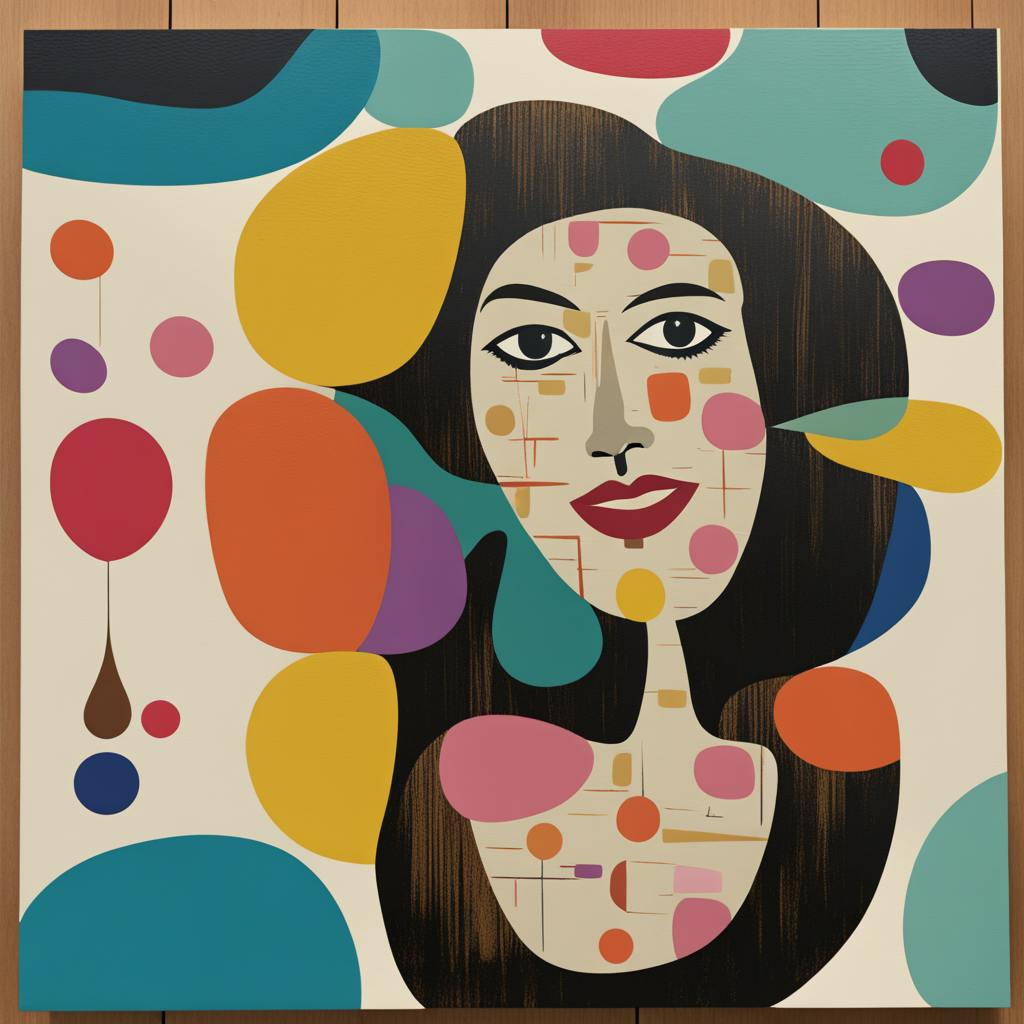Mid-century modern art emerged as a seismic shift in the art world, embodying a break from tradition and heralding a new era of creativity that continues to influence contemporary culture today. Defined by its clean lines, sophisticated simplicity, and innovative use of materials, mid-century modern art not only transformed the aesthetics of its time but also impacted architecture, interior design, and even graphic arts in significant ways. In this article, we will explore how this art form came to be, why it has remained influential, and how its elements are intertwined with modern-day culture.
Understanding of Mid-Century Modern Art
Mid-century modern art refers to the artistic movement that spanned roughly from the mid-1940s to the late 1960s. It is characterized by its embrace of minimalism and functionality, driven by a post-war era’s desire for a new visual language that resonated with the rapidly changing world. Artists like Jackson Pollock and Mark Rothko pioneered techniques that emphasized abstraction, capturing ideas and emotions through the use of color, form, and process.
This era of art was not restricted to painting alone; it extended into furniture design, architecture, and even urban planning. The international style influenced iconic buildings by architects like Ludwig Mies van der Rohe and Charles and Ray Eames, who propagated the minimalist, functional aesthetic that has become synonymous with mid-century modern design.
Exploration of Key Impacts
- A New Aesthetic Language: With roots in both the Bauhaus and the International Style, mid-century modern art provided a unique vocabulary that is now seen as both retro and distinctly modern. Its emphasis on simplicity and utility has laid the groundwork for today’s minimalist trends in art and design.
- Interdisciplinary Reach: One of the key features of mid-century modern art was its crossover into various fields. This approach to art and functionality blurred the lines between fine art and applied arts, influencing everything from graphic design to industrial products.
- Cultural Resonance: In a world recovering from war, mid-century modern art captured the optimistic ethos of the period. Its focus on the future, typified by bold experimentation with new materials and techniques, inspired a cultural shift towards innovation that persists today.

AI made with Stephanie Jagiello
Influence on Contemporary Culture
Today, the influence of mid century modern art is readily visible across various domains. The resurgence of this aesthetic in popular media, home decor, fashion, and technology design reflects its enduring appeal. Interior design magazines and television shows routinely feature mid century modern motifs, with sleek furniture and iconic art pieces becoming staples in contemporary living spaces.
Moreover, mid century modern’s emphasis on functionality and simplicity resonates with contemporary movements toward sustainability and conscious design. The efficient use of space and materials promoted during this era is mirrored in today’s architectural and urban designs focused on eco-friendliness and minimalism.
Legacy and Continued Relevance
The enduring legacy of mid century modern art is not solely due to its aesthetic. It is the movement’s ability to repurpose and reinterpret traditional artistic values through a modern lens that continues to make it relevant. This art form provided a sense of identity in a rapidly changing world and offered a universal appeal that transcends generations.
Art historians and critics can attest to mid century modern art's pivotal role in the evolution of contemporary aesthetics. Its principles persist and adapt to new contexts, proving that its impact was more than a historical movement—it was the blueprint for modern cultural evolution.
Frequently Asked Questions: Mid-Century Modern Art
What is the definition of mid-century modern art?
Mid-century modern art is a style and design movement that emerged roughly between the late 1930s and the mid-1960s. This period is characterized by a distinct approach to simplicity and elegance, often integrating form and function in its aesthetics.
The mid-century modern style is known for its clean lines, organic curves, and a preference for materials such as wood, metal, and glass. In visual arts, it embraces innovation with an emphasis on abstraction, minimalism, and the use of bold colors and geometrical patterns. The aim was to blend the traditional with the contemporary, thereby creating designs that were both timeless and innovative.
How did mid-century modern art revolutionize contemporary culture?
Mid-century modern art revolutionized contemporary culture by challenging conventional art forms and embracing new technologies and materials. It sought to break down barriers between high art and everyday life, making art more accessible and integrated into daily experiences. This era promoted a democratic approach to design, acknowledging that art and beauty should be a part of everyone’s life, not just the elite.
The revolution was particularly evident in architecture, interior design, and industrial design, influencing the way space is utilized both indoors and outdoors. The philosophy of "less is more," popularized during this time, continues to shape modern designs and is reflected in today's minimalist and functional aesthetic in architecture, furniture, and decor.

AI made with Stephanie Jagiello
Who are some prominent figures in the mid-century modern art movement?
The mid-century modern art movement boasted a rich array of artists, architects, and designers who played significant roles in shaping the movement:
- Jackson Pollock: An abstract expressionist whose innovative drip paintings revolutionized the painting technique and challenged the conventional norms of art-making.
- Eero Saarinen: An architect and designer known for iconic works such as the TWA Flight Center and the Gateway Arch, as well as the Tulip Chair, which exemplify the blend of function and futuristic aesthetics.
- Charles and Ray Eames: A husband-and-wife team who were pivotal in modern furniture design, known for their innovative use of plywood and fiberglass in pieces like the Eames Lounge Chair.
- Frank Lloyd Wright: Although his career spanned many decades, Wright’s later works, especially those like the Guggenheim Museum, influenced mid-century architecture with their organic forms and integration with the environment.
- Isamu Noguchi: A sculptor and designer whose style bridged the artistic and functional, seen prominently in his renowned Noguchi Table, which remains an icon of mid-century modern design.
What are some examples of the influence of mid-century modern art in today's society?
Mid-century modern art continues to influence various aspects of today’s culture, especially in design and architecture:
- Interior Design: The mid-century aesthetic is experiencing a resurgence, with many contemporary interior designs featuring minimalism, organic forms, and a focus on functionality paired with style. Iconic furniture pieces from this era, like the Eames Lounge Chair and Saarinen's Tulip Chair, remain popular.
- Architecture: The principles of mid-century architecture are evident in the continued popularity of open floor plans, large windows, and the integration of indoor and outdoor spaces.
- Pop Culture and Media: The aesthetic has been romanticized in television shows and movies like "Mad Men," which epitomized the style's sleek elegance and authenticity, thereby introducing it to new generations.
- Tech and Product Design: The ethos of mid-century modern design, focusing on how form meets function, is echoed in the design philosophy of many tech companies, such as Apple, where the emphasis is on clean, simple, and functional design.
Conclusion
Mid century modern art was not merely an artistic style but a cultural shift that has left an indelible mark on the world. Its innovative approach to art and design forged a path that redefined aesthetics and functionality, principles that continue to permeate contemporary culture. As we navigate the challenges of modernity, the clarity, conciseness, and uncomplicated beauty of mid century modern art offer a timeless appeal that is both comforting and revolutionary.

